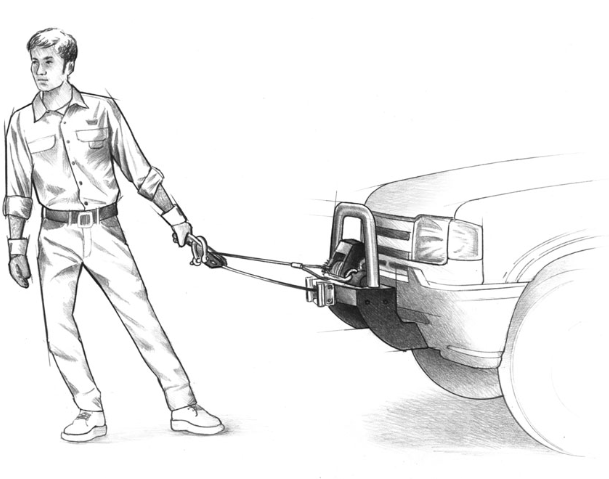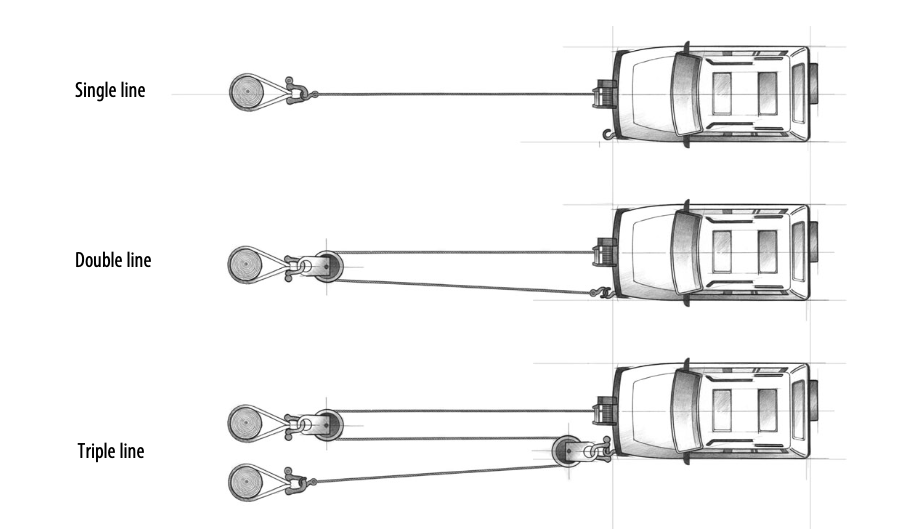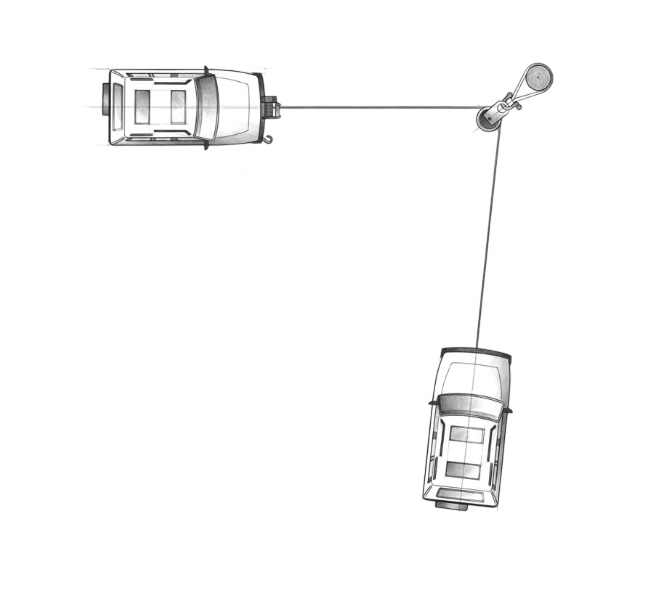What Is a Snatch Block for a Winch and How Do You Use It?
Various winching situations
may require the use of different winching techniques.
This could include situations such as too short a distance to achieve maximum pull using a straight-line setup,
or the need to increase pulling power or maintain the rope in a straight-line pull.
You must assess which technique is appropriate for your situation.
Always remember to think safety first.

How to change pulling direction? This is also where a snatch block comes in
When winching, it’s best to keep the rope running in a straight line from the winch to the object being pulled. This ensures even spooling on the drum, improves efficiency, and reduces the risk of rope damage.
Using a snatch block attached to a point directly in front of the vehicle allows you to change the pulling direction while keeping a 90° angle between the rope and the drum. This ensures the rope spools properly during operation.
A snatch block can also increase pulling power
In some situations, you may find you need more pulling power.
Using a snatch block provides mechanical advantage, which directly translates into increased winching power.

Double line
Winch pulling power decreases as the number of rope layers on the drum increases.
Using a snatch block in a double-line setup allows you to pull out more rope from the drum, reducing the number of layers and increasing pulling power.
Step-by-step:
Spool out enough winch rope to free the hook.
Attach the hook to the vehicle’s frame or tow point, then pass the rope through the snatch block.
Disengage the winch clutch and, using the snatch block, pull out enough rope to reach the anchor point.
Do not attach the hook to the winch mounting bracket.
Secure the rope to the anchor point using a tree saver strap or a choker chain.
Attach a shackle to both ends of the strap or chain, making sure not to overtighten – tighten and then back off half a turn.
Triple line
Similar to the double-line setup – as shown in the diagram – except the rope end is routed through two snatch blocks, with the third point being, for example, a tree.

